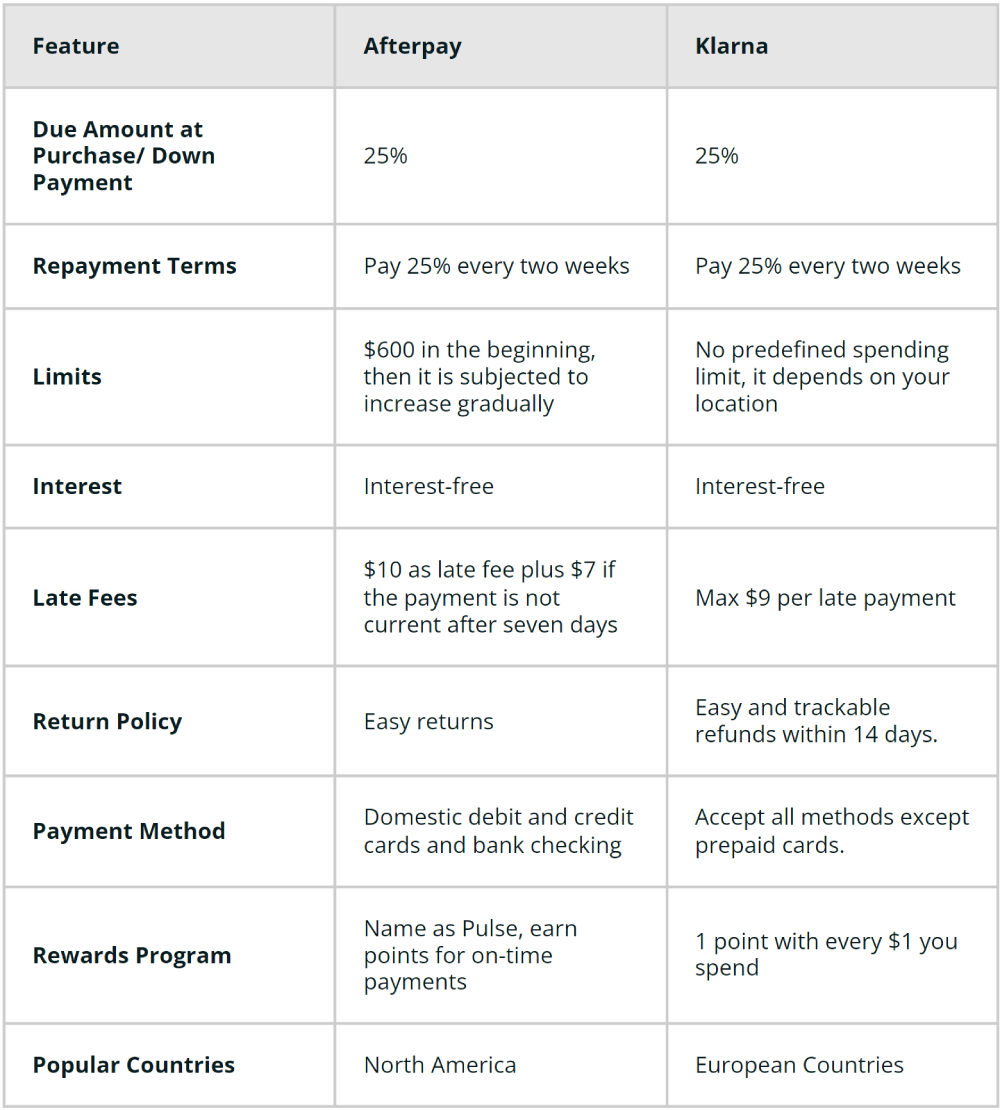Looking for a way to manage returns to your Shopify store? Click here to get a Shopify returns 101 plus the best apps for this task.
What’s in It for You?
Here you’ll find tips to handle Shopify returns effectively. So if you want to:
Then you’ll love what we have for you today. Read on to learn more!
Introduction
Then you’ll love what we have for you today. Read on to learn more!
Certain products might not meet customer expectations. And others, especially apparel and shoes, might not fit.
So buyers might not be happy with their first purchase from your store and will ask for refunds.
They expect friendly return policies. But most importantly, they want a swift return and refund process.
We will look at the best apps for automating returns.
Also, we will go through Shopify returns 101 to explain the best practices to follow. Let’s get right into it!
5 of the Best Shopify Returns Management Apps
The order returns process is a complicated problem in eCommerce businesses.
So Shopify does not offer an automatic returns management tool.
The platform leaves this section open to third-party apps, which include the following.
This app is an effective platform for fast-growing businesses because it:
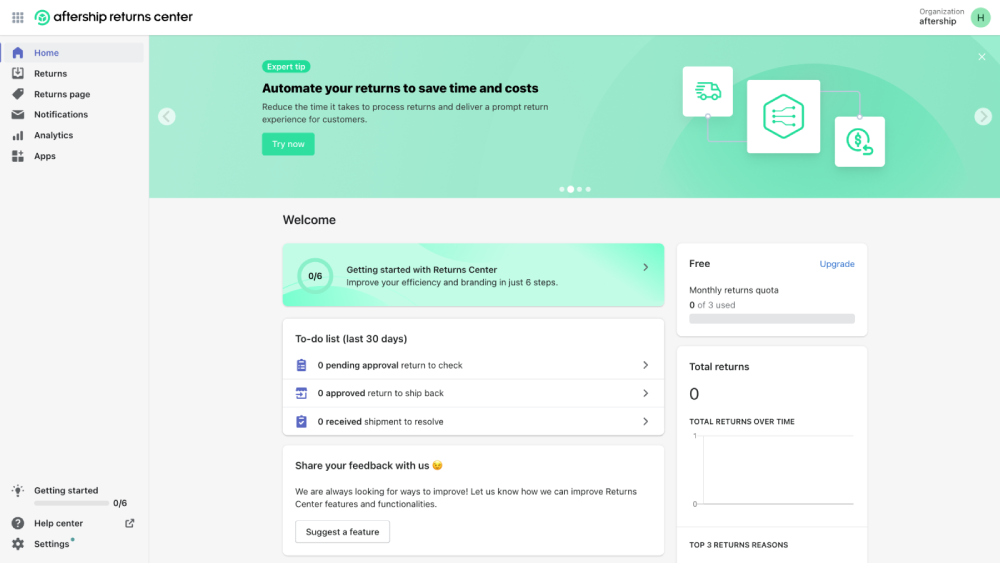
On the first point, the app delivers an outstanding post-purchase customer experience by using pre-paid shipping labels.
It generates these labels manually or automatically. And the latter connects to your Postmen shipper account.
Besides that, the app tracks RMA requests and returns in one place for easy management.
Also, it generates an RMA automatically after submitting a return request.
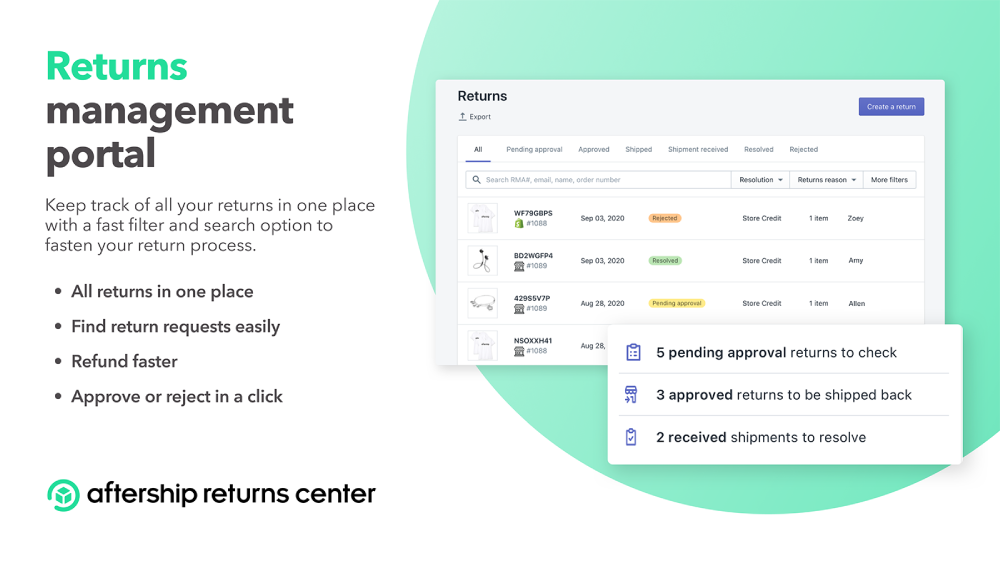
So you can track and synchronize the returns on the app’s dashboard.
And you can view detailed RMA event timelines to conclude return requests faster.
Also, you can add tags and images of how products get received to hasten the returns process further.
With brand loyalty, the app can customize your returns page to include your store’s:
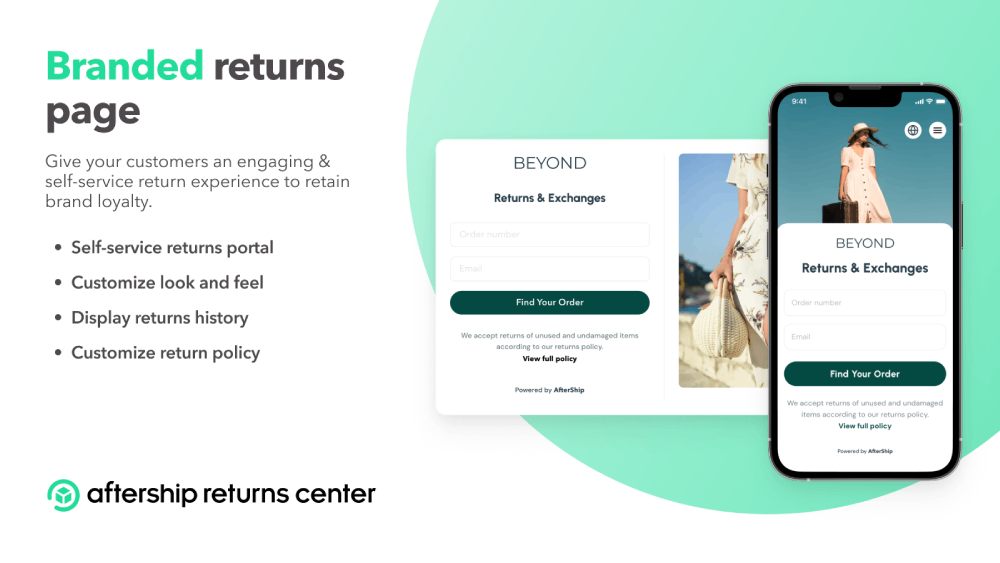
Additionally, it activates notifications for:
And you can send email updates based on the order language.
Lastly, the app offers flexible return solutions, with some converting returns to repurchases. They include:
And it integrates with several couriers while supporting four returns methods, namely:
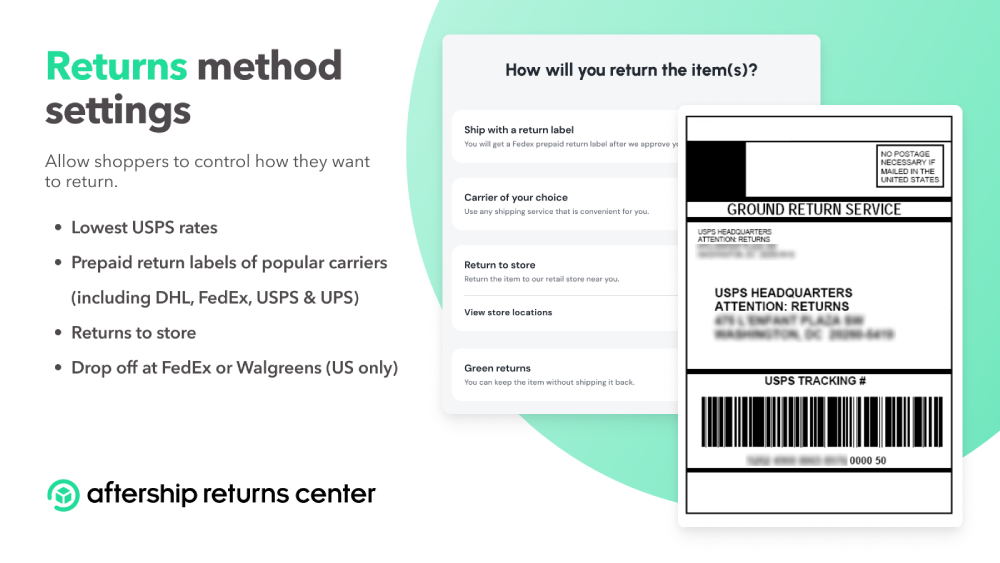
Pricing
Aftership features four packages separated by their:
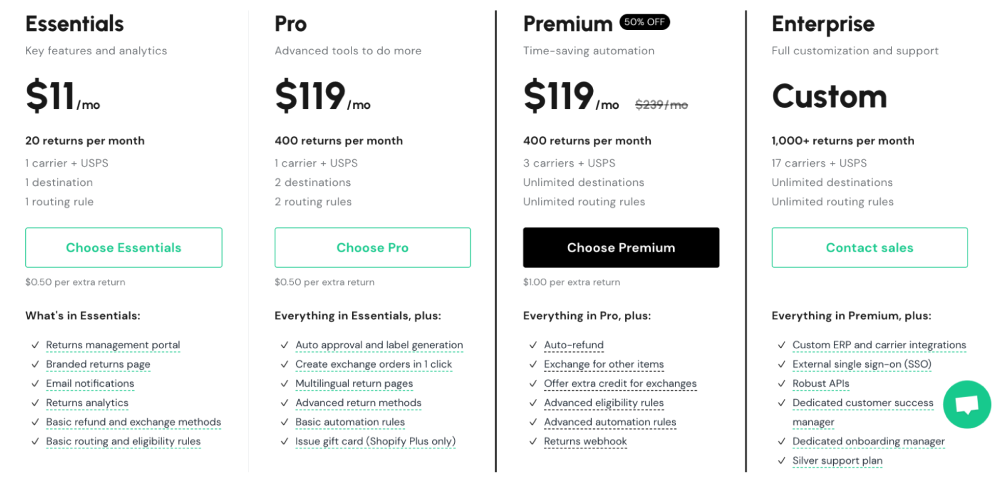
The annual billing has a better deal than the monthly one (18% discount). So you should consider using this option if you have enough money upfront.
ReturnZap ‑ Returns Management
ReturnZap offers effortless returns management for Shopify admins in five ways. It:
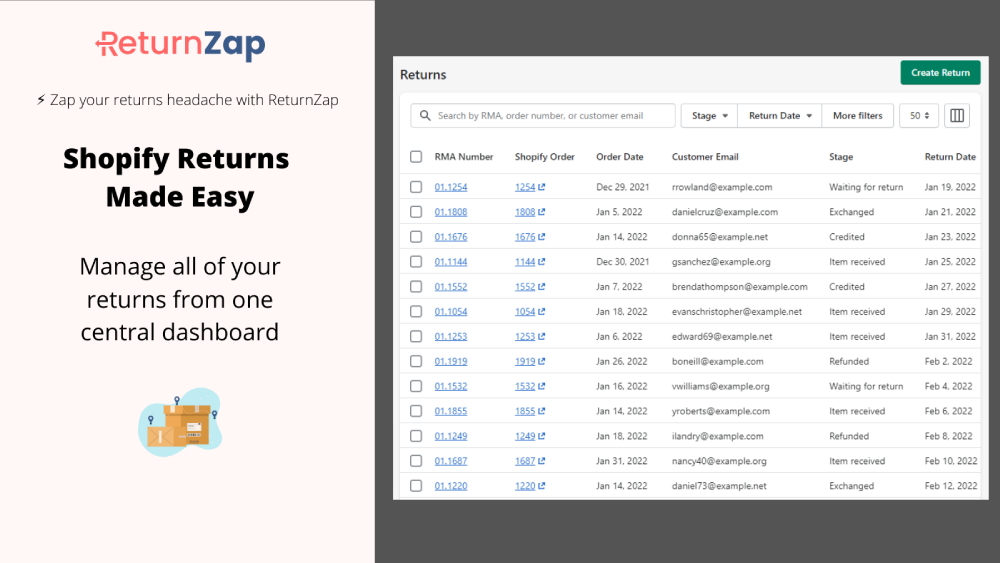
The self-service customer tool requires the buyers to enter their email addresses and order numbers. Next, they select the items and specify the reason for returning them.
After that, the customer should choose the return shipping option based on store policies. And there is the option of generating a shipping label and RMA.
The app enables you to customize customer email notifications. And it can send them at any step in the returns process.
Additionally, it supports seven languages to handle clients from different parts of the world.
ReturnZap also has a powerful dashboard for the shop admin. This module can:
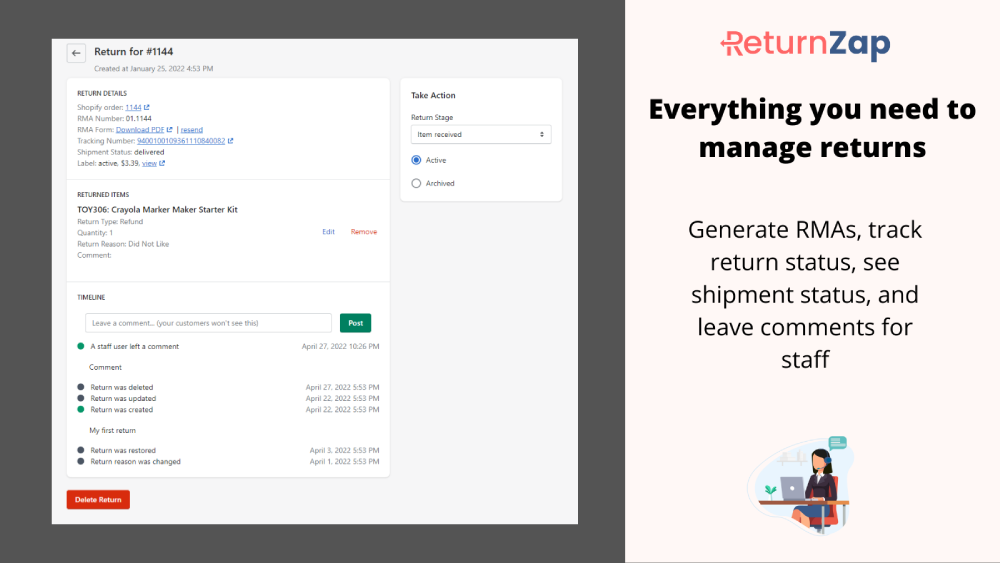
Pricing
This app has three pricing plans, including a free option with no return limits.
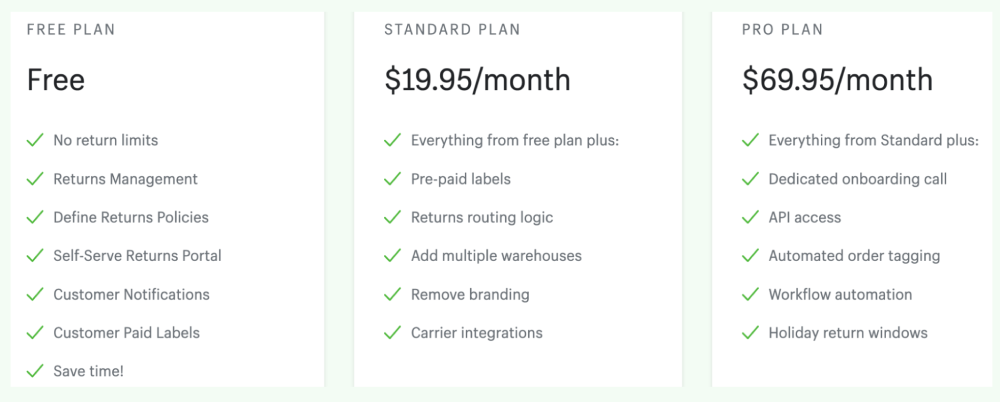
But you can only get pre-paid labels and custom branding in the paid options. These have a 14-day free trial period to experiment with the features.
Easy Returns Management System
From the admin end, this app lets you create a return request from the admin panel while recording the following.
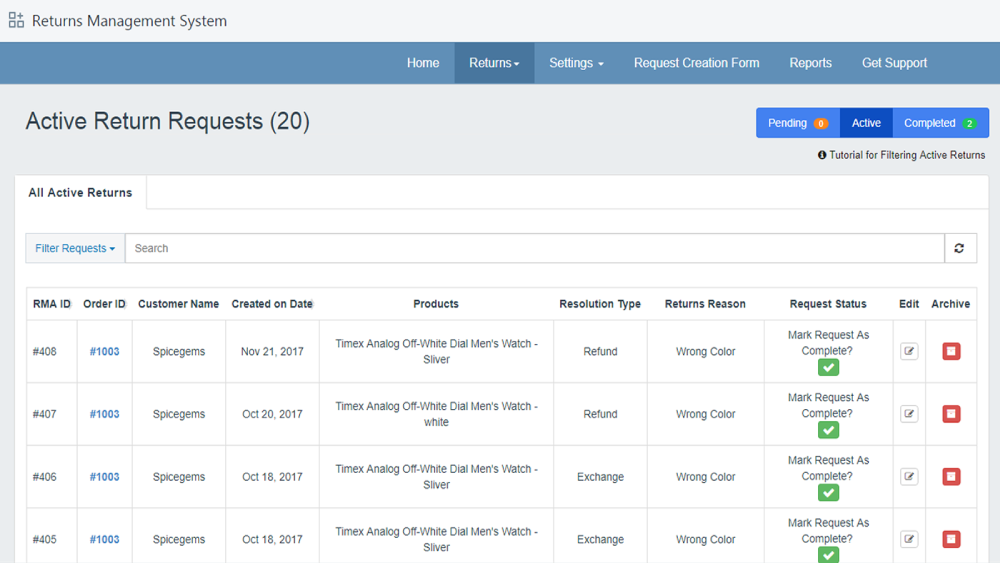
Once done, it shows graphical reports on the dashboard.
This data gives a birds-eye view of the product movement, indicating the most typical:
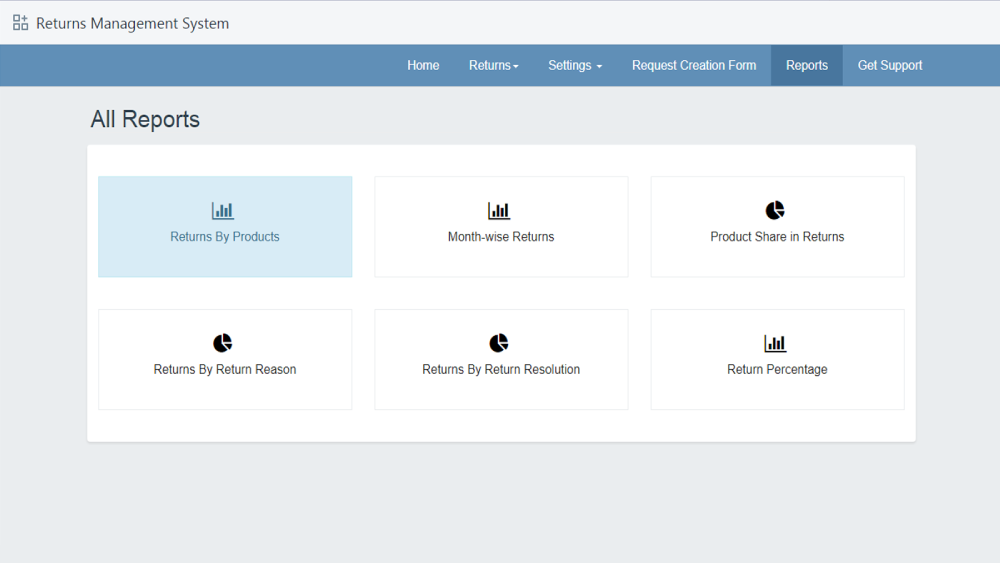
And customers can attach images to the return request to support the return reasons.
The combination of graphical reports and images gives you actionable insights to help cut costs.
Besides that, this app lets you define a time window in days for creating the request.
Returns usually have an expiry period. Once this time lapses, a customer will get a “Return Window Expired” message. On top of that, you can:
And since you are the admin, you can override all return rules to create a return request.
Pricing
Easy Returns Management System has only one pricing plan for $19.99 monthly.
And it comes with a generous 30-day free trial that gives you enough time to explore the features.
Return Prime
Return Prime lets you define exchange and return windows to match your store’s policies.
This window usually depends on the product and should not last forever.
If customers want to launch return requests within the specified window, the app lets you ask for photos and extra info to support the claim.
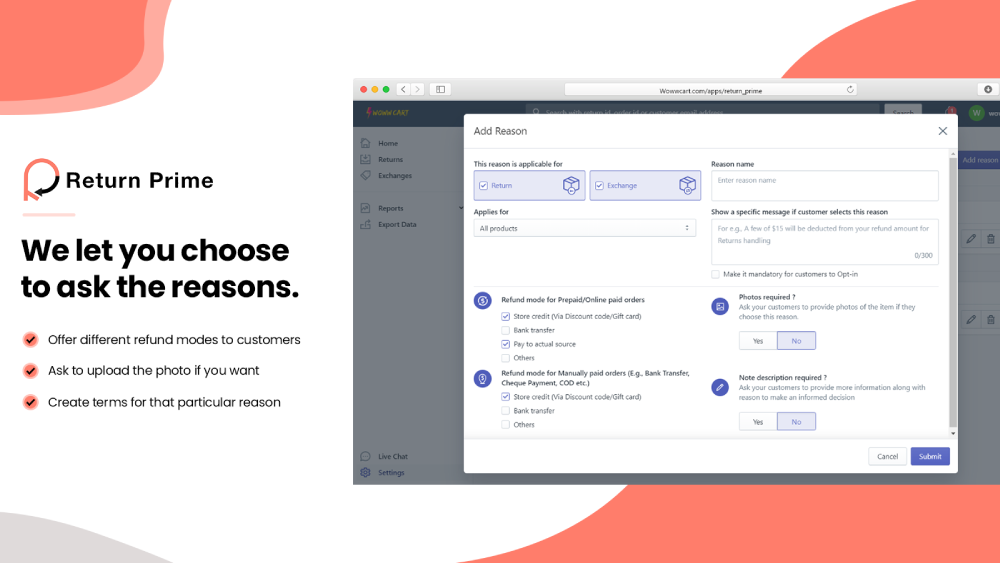
You can use the app’s automation feature to handle the return requests without your input.
And it is possible to connect it to your logistic account to send return labels to clients.
The app integrates with all major logistics companies to manage returns efficiently. It charges for the return labels sent to customers, then deducts the amount from the refund.

And it can issue the refund balance as discount coupons, gift cards, or via the customer’s card.
A better option would be to exchange the product for another instead of a refund. And the app avails this option to the customer.
Pricing
A free plan is available, and it has these features.
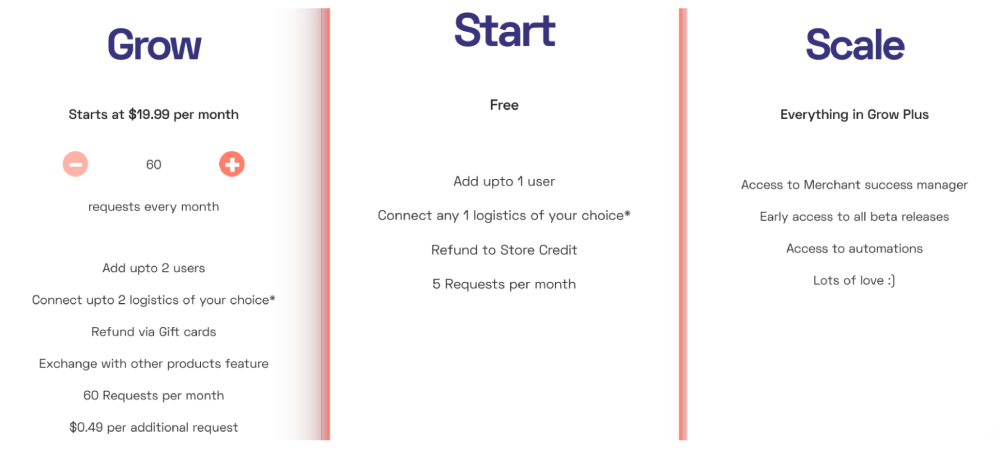
These limitations make the premium plans better options. They start from $19.99 monthly.
ShippyPro ‑ Labels and Returns
ShippyPro has four core functions. It enables you to:
On the returns module, the app features a branded returns portal. This section helps build brand loyalty when customers make return requests.
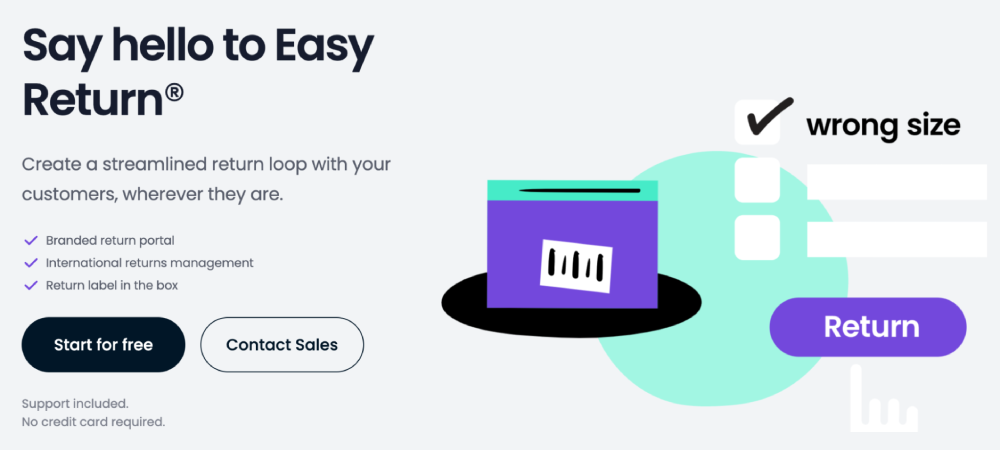
Also, it includes a return label in the box for managing international returns.
One unique feature ShippyPro has to offer is its extensive library integration.
You can pick from over 160 global and local carriers to cover every corner of the globe.
And it supports over seven languages to enable you to:
Pricing
ShippyPro has no free plan. But, it has a generous 30-day free trial for the Fast Growing and Professional packages.
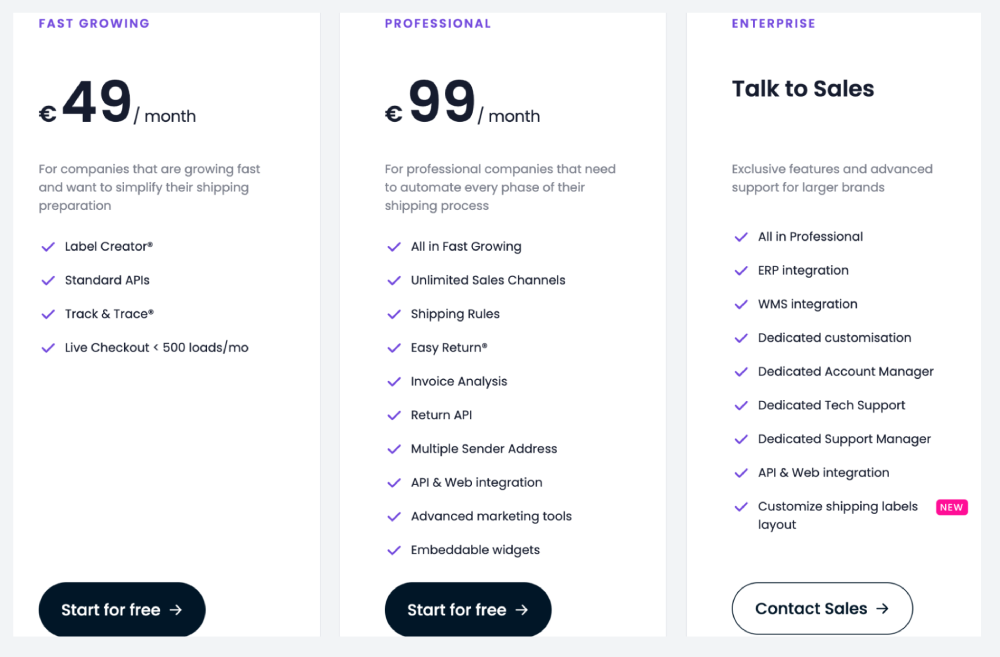
Established brands will be better off with the Enterprise plan because it offers custom features at a negotiable price.
5 Practices to Follow When Processing Shopify Returns
As a Shopify store owner, the ultimate goal should be to improve customer experience.
And this should cover all aspects of the purchasing process, including returns.
So you should follow these practices to give your customers a smoother time in your store.
Implement a Straightforward Return Policy
Implementing straightforward return policies from scratch can be challenging.
So we recommend going through some templates or other eCommerce website policies first.
Once you start crafting yours, create the document while visualizing the return process.
Also, make the contents skimmable and use simple language.s
It is better to adopt a more liberal returns policy and engage shoppers making a return to find out how the process fairs.
Don’t forget to set clear rules on what customers can and cannot return. And include the return window. Most stores cap it at 30 days, but it should depend on the products.
Another vital factor to consider is how easy it is to find the return policy page. Include a link to the document in these areas.
Since this policy will contain lots of text, create a returns and exchanges FAQs page.
This page should provide answers to the typical questions, including if you provide free return shipping.
Speaking of shipping, you should provide free return shipping. It will act as a marketing tool to overcome pre-purchase anxiety.
Convert Returns Into Store Credit or Exchanges
Cash refunds lose you money because the amount paid goes back to the customer. But store credits and exchanges keep the revenue on your side. Product exchanges are pretty straightforward, but store credits can be in the form of:
They allow customers to select other similar products.
Not only are store credits and exchanges good for business, but customers prefer them.
A 2018 report found that 54% of consumers under 25 would buy products in an online store if it provided free returns or exchanges.
So this strategy can boost your sales, as well.
But don’t force the customers to take these credits or exchanges.
If they insist on getting cash refunds, return the money.
Automate the Return Flow
Manual processes are prone to human error and inefficiencies. So eliminating the human element makes the return process faster.
And you can use any of the apps reviewed above to automate your store’s return flow.
There is the option of using Shopify Returns Management Software.
But these platforms solve more complex problems, and their subscriptions are costlier.
Offer More, Better Choices
Customers are more likely to exchange products if they get a better alternative.
Also, they will likely accept store credits if you have a wide product variety on sale.
So for these two strategies to be effective, you need to offer more and better product options.
Act On The Return Feedback
Customers feel heard when they give you their views because it gives them a voice.
And it gets even better if you and you implement their views. It makes them feel more connected to your business.
So they are more likely to come back or recommend your store to others.
But more importantly, this feedback will help you enhance the customer experience with future returns.
Additionally, it can help you reduce returns because they are costly to the business.
The average eCommerce return rate rose by 6% to 16.6% in 2021 compared to the previous year.
And considering the restocking fee, a return costs retailers $10-$20 before shipping.
These figures can significantly affect your cash flow.
So the feedback can help determine which products are best for the market to reduce returns.
FAQs
If we have skipped anything, here are answers to the most frequently asked questions.
Do You Have To Accept Returns on Shopify?
No. You don’t have to accept returns on Shopify.
But it is good practice, especially when dealing with wearables (shoes and apparel).
How Do Returns Work With Shopify Dropshipping?
With Shopify, you don’t sell the products directly. So you must direct the returns to the suppliers without the customer knowing.
The process involves requesting a Return Merchandise Authorization (RMA) from the supplier first.
You then give the RMA to the customer. The customer should note the RMA on the address when mailing the merchandise.
On payment, the supplier will refund your account for the product’s wholesale price.
Then you will refund the customer the retail price. Or, you can provide store credits or exchanges.
How Do I See Returns on Shopify?
These options will show the returned orders.
Final Words on Returns Management
Returns are vital in eCommerce businesses. They cut the risks and lower the barrier to purchasing.
And automating the process makes it easier to manage the return flow. Customers can launch the return flow, and you don’t need to do much.
But there are several return management apps, each with specific pros and cons.
There is no best platform for all businesses. So take some time to compare them and their pricing to determine the best one for your online store.
To minimize your return requests, find the root cause and adjust. Survey your customers to know more about their experience. Design processes around customer satisfaction and implement best practices to reduce post-purchase dissonance.
If you already have a Shopify store, tune it up with Rush.app to reduce your customer support expenses by 67+ percent. Try Rush to automate your order tracking and deliver an outstanding post-purchase experience to your customers.
That’s it for this article. If you have any questions or sentiments you’d like to share, drop a comment below. We’ll be in touch.
